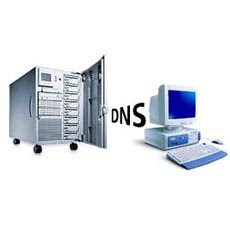Microsoft has launched
Windows Small Business Server 2008, which is aimed at companies with up to 75 employees.
The software includes copies of Sharepoint and Exchange Server, which offer company-wide email, remote access to desktop machines, backup and restoration services, as well as file and printer sharing.
Small Business Server also allows employees with Windows Mobile-based smartphones to access their email, contacts and calendar remotely.
Unsurprisingly, security figures prominently in the feature list, with customers receiving a 120-day evaluation copy of Windows Live OneCare, and Forefront Security for Exchange Server, which scans messages for viruses, spam and spyware.
There's also a premium version of Business Server called Essential Business Server aimed at companies with 300 or more employees.
Essential Business Server customers receive a copy of the SQL Server 2008 database management software, and a one-year subscription to Forefront Security for Exchange Server and Microsoft Forefront Threat Management Gateway.
Source:pcpro
Several features are present in Windows Server 2008 to enable faster, more seamless access to file and print services on your network. Although the infrastructure of the file and print systems has not been completely redesigned, it certainly has been modified to provide for ease-of-use enhancements, increased data integrity, automatic and assisted backup, and other key features, including the following:
Distributed File System (DFS)
DFS is a feature in Windows Server 2008 that permits an administrator to create one logical filesystem layout despite the fact that shares can be scattered across the network on different servers. This makes it easier for clients to find and store files consistently, and it allows for better equipment utilization. One server can host multiple DFS roots, which are "starting" points for a hierarchy of shared folders. In addition, a Windows Server 2008 server can use Active Directory site topology to route DFS requests from clients to the closest available server, increasing response time.
Encrypting File System (EFS)
Native encryption abilities are built into the NTFS filesystem used in Windows Server 2008. By simply checking a checkbox in the Properties sheet for a file, you can easily encrypt and decrypt files and folders to protect their integrity. This feature is particularly useful for mobile computers, which have a greater risk of data loss and capture than traditional corporate desktop
machines.
Volume shadow copy
The volume shadow copy feature is perhaps one of the most useful features of Windows Server 2008. The server will take snapshots of files at specific periods during the day, thereby making available a library of previous versions of a file. If a user accidentally overwrites a file, saves an incorrect version, or somehow destroys the primary copy, he can simply click Previous Versions in the Explorer view of the folder and access a shadow copy version.
Windows Search Service
The Windows Search Service, new to Windows Server 2008, catalogs and indexes the contents of server hard disks, enabling users to search in files in different formats and languages for the data they need. The engine has been enhanced over several revisions of the product to accelerate the search process and to use less processor time when cataloging and indexing files.
Source:computingtech.blogspot.com/2008/05/windows-server-2008-file-and-print.html
Iomega Corp. today announced its StorCenter Pro NAS 450r series array -- a rack-mountable series of
Network Attached Storage (NAS) devices that feature capacities up to 2TB and
print server capabilities. Prices start at $3,999.
Mac, Windows and Linux-compatible, the StorCenter Pro NAS 450r employs
Windows Storage server 2003 R2 for an operating system. Under the hood is a dual-core Xeon CPU, hardware-based RAID support, hot-swappable 7200RPM Serial ATA (SATA) hard disk drives, dual Gigabit Ethernet ports and other capabilities.
The StorCenter Pro NAS 450r features four disk drives and hardware-based RAID Level 0 (striping, no fault tolerance), Level 1 (mirroring) or Level 5 (striping with parity) support. An Ultra 320 SCSI port is also included, for high-speed direct backup.
The StorCenter Pro ships with a five-client license of EMC Retrospect Express backup software. Also included is
Windows Print Server, which provides centralized support and management for up to five network printers.
The StorCenter Pro NAS 450r costs $3,999 for a 1TB system (incorporating four 250GB drives). A 2TB system (using four 500GB drives) costs $4,999. Iomega plans to ship a 4TB model once 1TB drives are available later this year.
Via:www.computerworld.com/action/article.do?command=viewArticleBasic&taxonomyName=nas&articleId=9016399&taxonomyId=148&intsrc=kc_top
Windows Server 2008’s print server role offers a new Print Management console. (An earlier form of the console was part of Windows Server 2003 R2.) The Windows Server 2008 version, which is provided to the server when the print server role is added, allows you to retrieve information and the state of printers and other print servers. For clean installations, you can also use the Print Management console to install printers to client systems via Group Policy.
After installing the print server role, the Print Management console appears and offers a central view for the printers and print servers. Figure A shows the main screen of the Print Management console.

The Print Management console is one of the stronger features for Windows Server 2008 simply because of the deployment options of printers through Group Policy. For a printer deployed through Group Policy, the corresponding Group Policy Management configuration is shown in Figure B.

As with other Group Policy configurations, it can be applied to User or Computer objects. This flexibility can avoid risky scripts or inconsistent driver situations that can result from haphazard printer deployment.
You can apply the Print Management console to a permission model for delegated control so a help desk technician could clear a queue or even deploy the printer to a client. Printer drivers can also be managed within the Print Management console, avoiding issues where unnecessary printing features complicate the support of the solution.
Source:blogs.techrepublic.com.com/datacenter/?p=455




